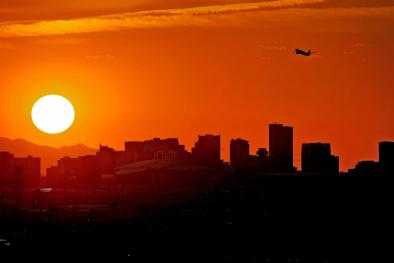Science Source
More frequent intense and long-lived storms dominate the springtime trend in central US rainfall
- Finds that large regions of the central United States experienced statistically significant upward trends in April–June mesoscale convective systems (MCSs) rainfall of 0.4–0.8 mm per day (approximately 20%–40%) per decade from 1979 to 2014
- Finds upward trends in MCS frequency of occurrence, lifetime, and precipitation amount, which they attribute to an enhanced west-toeast pressure gradient (enhanced Great Plains low-level jet) and enhanced specific humidity throughout the eastern Great Plains
- Shows plots of trends in surface and 850 hPa specific humidity of 0.4 and 0.2 g/kg/decade, respectively, from 1979–2014 for the April–May–June period across the Midwest—representing increases of approximately 5% and 3% per decade, respectively
Related Content
Science Source
| MDPI
The Effects of Historical Housing Policies on Resident Exposure to Intra-Urban Heat: A Study of 108 US Urban Areas
Jeremy S. Hoffman, Vivek Shandas, and Nicholas Pendleton
Headline

Nov 17, 2023 | Climate Nexus Hot News
Our Warming World Is Dangerous For Human Health
Headline

Oct 16, 2023 | AP
Rising Heat-Related Deaths in AZ
Headline

Oct 11, 2023 | Climate Nexus Hot News
Study: Climate Change Could Push Heat and Humidity Past Survivable Limits for Humans


